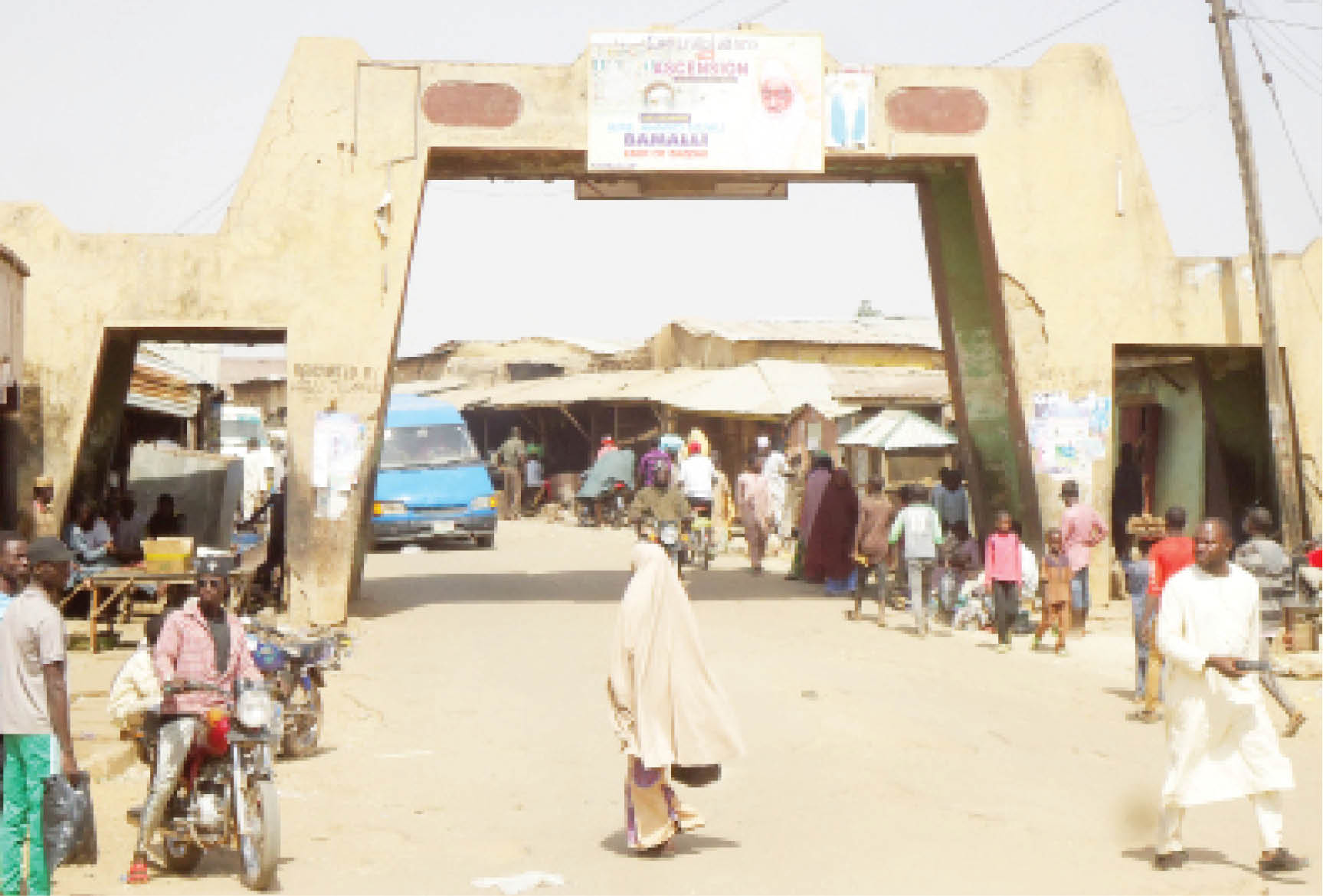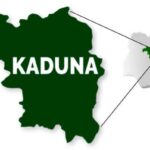The city of Zaria is believed to have come into existence in the 16th century, about 700 years ago.
Daily Trust reports the formation, historical importance and unique characteristics of the city’s ancient wall and gates.
- Libretto to release ‘A Song of Endless Flames’ today
- Liverpool whitewash Aston Villa to reach FA Cup fourth round
Zaria is the headquarters of the Zazzau Emirate, which comprises most parts of northern and central zones of Kaduna State, including the capital.
The town was said to have been founded by Bakwa Turunku, the father of the famous Queen Amina of Zazzau.

Turunku migrated to where the ancient city of Zaria is today, from Turunku town, which is now under the Igabi Local Government Area of Kaduna state. Turunku town was the former headquarters of the Zazzau Emirate.
He was said to have followed his second daughter, Zaria, who was living in Kufena town. Turunku to Kufena is a distance of about 30 kilometres.
Kufena served as the second headquarters of the Zazzau Emirate after Turunku town.
When Bakwa Turunku and his entourage arrived the place called Zaria today, he decided to stay there and build a tent under an oak tree (Gawo ) instead of moving to Kufena, where his daughter was, which is about 12 kilometeres away, history of Zaria reveals.
Turunku later built a house close to the oak tree for the fact that oak trees are specially blessed.
Oak trees are acacia that store water under their roots, which can be used during the dry season when dug, findings showed.
According to investigation on the history of Zaria, members of Turunku’s entourage also got separate pieces of land to develop their residences within the precinct of their leader’s house.

Therefore, the ancient walls and gates of Zaria, history shows, have their root from the house built by Turunku in the middle of the place known as Zaria today.
His daughter, Zaria, research shows, sent expert builders and slaves to construct the walls around a vast area, with her father’s and his people’s houses in the middle.
After the construction of the wall, Bakwa Turunku named the entire area after his daughter, Zaria.
This was how the ancient city got its name, according to the history of the city.
Our correspondent who went round the entire ancient wall of Zaria observed that it is about 20 kilometres long.

Although most parts of the ancient wall were lost to residential houses, markets, shops, garages, schools et cetera, a significant remnant of the wall buttresses the expertise of the builders and the amount of energy expended in developing one of the most sophisticated masterpiece-edifices in Nigeria.
Aside the wide moat that was dug to “prevent the horses of the enemy” to access the wall, the depth, width and height of the wall are other portrayals of the Zazzau civilisation since ancient time.
Our correspondent learnt that 700 years after the construction of the ancient wall, its height is still about eight metres.
The width is about seven metres, while the depth that was filled with collection of mud bricks and sand is also about eight metres.
The architectural design of the ancient wall of Zaria made provision for gates sighted at some strategic locations. Daily Trust observed that the distance between one gate and another is about three kilometers.
Eight gates mounted around the ancient wall of Zaria serve as entry and exit points. Both residents and visitors are still using the gates to enter and move out of the ancient town.

Many observers see Kofan Doka as the famous gate among the eight.
Although history has shown that it was not the first gate constructed by the founders of Zaria, Kofan Doka is famous because it is the main entry point into the city for those coming from Kano, a neighbouring state, and by extension, Jigawa, Yobe and Borno.
Also, visitors from Katsina State, and by extension, Niger Republic, easily access the ancient city through Kofan Doka.
The same thing applies to those coming from Plateau, Bauchi and Gombe states, among others.
An exploration of the ancient wall of Zaria from the ancient gate of Kofan Doka to the left, along Jos road, will take one to Kofan Bai, a distance of about two kilometres.
The ancient wall of Zaria links Kofan Bai with Kofan Galadima, a distance of about three kilometers.
The next gate on the wall after Kofan Galadima is Kofan Kona. The wall stretches to the next gate, Kofan Gayan.
Kofan Kuyan Bana is next after Kofan Gayan. Kofan Jatau follows it, and thereafter, the wall will lead one to Kofan Kibo, and finally stretches back to Kofan Doka.
Although the construction shape of the about 20 kilometres wall is zigzag, by either design or impediments, however the wall rounds the entire ancient city to the admiration of the inhabitants and visitors alike, especially those who have time to study the expertise applied in the construction.
According to an expert on the history of Zazzau Emirate, who doubles as special assistant to the Emir of Zazzau on security matters, Alhaji Usman Dalhatu, Kofan Gayan was the first ancient gate built in the ancient city of Zaria.
Dalhatu said the gate got its name from a river known then as Rafin Gayan (River Gayan), which was between Turunku town, the first headquarters of the Zazzau Emirate, and the present Zaria city.
He added, “People that were migrating from Turunku to the new city, Zaria, had to cross the river to get to the new city.
“This was why, according to history, the gate was named Kofan Gayan.”
The next gate to be constructed was Kofan Kona. Before the migration of Bakwa Turunku to Zaria, there were people living in the Kona area when the Zazzau headquarters was in Kufena.
The Kona people used to have their ancient wall known as Ganuwar Konawa (Wall of Konawa). \
Hence, Dalhatu said, a gate was constructed for them.
Kona is known for scholarship; therefore, the gate was constructed to allow their clerics move to the new town to teach settlers in the new Zaria city.
Kofan Doka, according to history, was the third gate to be constructed.
At its construction, it was known as Kofar Kano.

It was later renamed Kofan Doka, Dalhatu explained.
The new name was derived from the Doka trees (large trees, high with straight trunks) that were found at the precinct of the gate.
However, another version of history indicates that the gate was renamed Kofan Doka in recognition of a well that was close by, specifically where the Zaria prison is situated now.
“Before that place became a prison, it was the palace of Sarkin Zazzau, Malam Abubakar Dan Malam Musa. He reigned from there.
“The well in question was known as Doka (law) because people who committed capital offences were thrown into it.

However, when Kofan Doka was constructed before the Jihad of Sheikh Usman Bn Fodio, it was known as Kofan Kano.
“This first name is certain in history; it was the renaming that has two versions of history,” Dalhaut said.
Kofan Doka was first named Kofan Kano because it served as the simplest route for travellers from the ancient city of Zaria to Kano.
Similarly, those coming from Kano to Zaria used the gate as their entry point.
The fourth gate in the ancient city of Zaria, Kofan Kuyan Bana, got its name from a brave warrior, whose stars shone during the reign of Queen Amina of Zazzau.
This warrior, according to Dalhatu, was sent on conquest expedition by the Queen to a town east of the Kwatarkwashi mountain in the present day Zamfara State.
“The town’s name is Kuyan Bana. The conquest mission, Dalhatu said, turned out successful.
“Many slaves were captured,’’ Dalhatu added.
Therefore, this warrior temporarily stayed in the place where the Kuyan Bana gate is now situated, before he eventually moved into the ancient city.

This, according to Dalhatu, informed the decision of the Queen to name the gate Kofan Kuyan Bana, in recognition of the warrior’s bravery and success at the warfront at the Kuyan Bana town.
“Later, Kuyan Bana became a traditional title for a brave personality, and songs of praises rendered to him,” he explained.
The fifth gate is Kofan Tukur Tukur, which got its name from a nearby old town of Tukur Tukur.
It is an old settlement that was in existence since the days of Kufena as headquarters of Zaria, findings revealed.
Tukur Tukur has its ancient wall, Ganuwa; hence when the fifth gate of Zaria was constructed, it was named after the town.
During the reign of the Fulani Dynasty, according to Dalhatu, the Tukur Tukur gate was the route used by those travelling to Sokoto from Zaria.
However, when the then Emir of Zazzau, Sarki Muhammadu Sambo, the grandfather of the late Emir Shehu Idris, ascended the throne, a fierce battle with warriors from Ningi led to the change of name of Tukur Tukur gate to Kofan Kibo.
History shows that Sarki Sambo followed the gate to move out of the city of Zaria on his way to Sokoto for the usual annual homage to the then Sultan when the Ningi warriors attacked him.
He hurriedly returned to the city with his entourage and the Tukur Tukur gate was closed to deny the Ningi warriors access into the city of Zaria, findings showed.
Thereafter, a titanic battle ensued and bows and arrows emerged as weapons used by both parties.
In Hausa, arrow is known as Kibiya, and the plural, arrows, known as Kibo; hence, after the successful completion of the war, the Tukur Tukur gate was renamed Kofan Kibo in memory of the war.
Kofan Galadima, according to history, was the sixth gate established on the ancient wall of Zaria.
The gate was established during the Habe Dynasty and was named Kofan Galadima because of its proximity with the house of the then titleholder of the Galadiman Zazzau, which was just a stone-throw from where the gate was built.
Dalhatu also explained that the Galadima gate received low patronage after its establishment as residents and visitors preferred to use the other gates.
However, it served as the most preferred route by Zaria warriors going to areas like Bauchi on war expeditions.
History shows that before the jihad of Sheikh Bn Fodio, the vicinity of the Galadima gate served as the abode of a large number of the Habes (members of the Habe Dynasty).
However, after the jihad, the area was deserted as the Habes followed the then Emir of Zazzau, Sarki Muhammadu Makau, who left Zaria, findings revealed.
The seventh gate of Zaria is Kofan Bai. This gate, constructed at rock top, is behind the emir’s house.
Its location made it famous and strategic during the ancient period, Dalhatu explained.

The last and the eight gate of Zazzau is Kofan Jatau.
It was constructed during the reign of Sarki Isiyaku Jatau. He is the father of Sarki Muhammadu Makau.
Sarki Isiyaku, according to history, is the 58th Emir of Zazzau in the Habe Dynasty.
He was said to have made enormous contributions in the propagation of Islam; hence he was also known as “Lover of Islam.”
It is in line with his disposition to Islamic teachings that the Jatau gate was opened to ease access to the city for Islamic scholars from different parts of Hausa land, findings showed.
Investigation shows that the ancient gates of Zaria were expanded and modernised by the present Zazzau Emirate.
Before the expansion exercise, the gates were not as wide as they are now, and they were in their original mud form.
Findings show that unlike their present busy status, most of the gates were not functional before their expansion.
“Before the late Alhaji Shehu Idris ascended the throne of the Emirate, only two of the gates were functional because they were reconstructed with stones.
These functional gates were Kofan Doka and Kofan Kuyan Bana.
The emir devoted a lot of time and resources to reconstruct and remodel the gates.
Although he did not accomplish the reconstruction of all the gates, however, five of them are now wearing new looks from the way he met them, while two are under construction.
It is only in Kofan Galadima that nothing was done in terms of reconstruction before the demise of the emir.
It is our belief that the new emir would do even more to sustain these reminders of our history,” Dalhatu said.
On his part, the traditional titleholder of Sarkin Maginan Zazzau (king of Zazzau builders), Alhaji Gidado Haruna, said the construction of the Zaria ancient wall was amazing as it is a demonstration of the age-long architectural civilisation of Hausa people.
He said, “The wall was entirely built with sand and mud bricks. It was after the bricks dried that the building proper commenced.
“The bricks would then be used to construct four or five steps, side by side, or left and right, covering certain distances, then sand would be used to fill the middle, which was about seven metres wide from left to right.
After the filling with sand, more steps would be constructed with the mud bricks until it reached the required height.
This was how the wall was built. From here, you will agree with me that hundreds of people were involved in building the wall; and most of them were slaves.
A lot of manpower, resources and time were used in building the wall that is still standing, 700 years after.”
Alhaji Haruna said because of the name Zaria native builders made for themselves, neighbouring towns and cities that wanted to reconstruct their walls usually invited them.
Daily Trust learnt that there was an attempt by the British government, through its embassy in Nigeria, to rebuild the ancient wall and gates of Zaria some years back.
What scuttled that initiative could not, however, be ascertained.
Our investigation also revealed that there is a plan by the Kaduna State Government to reclaim all the places (wall and gates) encroached upon by some residents of the ancient town.
Already, some of the people who encroached on the walls are said to have started vacating the structures they erected, in anticipation of a possible action of the state government.
Those who have not moved out of their buildings are said to be living in fear.
Many indigenes and other residents of Zaria see the ancient gates and wall as historical monuments of pride as it reminds them of their 700 years of existence.

 Join Daily Trust WhatsApp Community For Quick Access To News and Happenings Around You.
Join Daily Trust WhatsApp Community For Quick Access To News and Happenings Around You.


